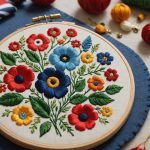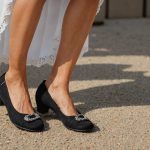Understanding British Fashion Heritage
The legacy of British fashion history is rich and deeply rooted. It intertwines with the nation’s cultural fabric to shape a timeless style that continues to reverberate through modern trends. Central to this heritage are the quintessentially classic British garments such as the trench coat, tailored suits, and tweeds, each embodying the essence of both style and function. These garments emerged as a response to the practical needs of British society, showcasing how utility and elegance harmoniously intertwine.
The trench coat, for instance, gained prominence during World War I, crafted to equip soldiers with a durable yet stylish piece of outerwear. Over time, it transitioned from military use to an enduring symbol of British style. Similarly, the tailored suit—synonymous with British fashion history—evolved from the meticulous craftsmanship of Savile Row, the heart of bespoke tailoring.
Also read : Transform your style: innovative tips for rocking a trench coat with a chic, contemporary flair
This heritage’s influence extends beyond the garments themselves. Elements of traditional British fashion continually inspire contemporary fashion designers globally. The penchant for quality materials, structured designs, and understated elegance reflects in today’s fashion trends, making British fashion a timeless source of inspiration. Understanding these roots not only celebrates the past but also enriches the ongoing evolution of global fashion.
The Art of Embroidery in Fashion
Embroidery has long been an essential component of fashion embellishment, bringing a flourish of detail and intricacy to textiles. When considering embroidery techniques, several methods are particularly well-suited to enhancing clothing. Techniques such as satin stitch, cross-stitch, and beadwork add dimension and texture, expertly transforming garments into wearable art.
Also to read : Transform your style: innovative tips for rocking a trench coat with a chic, contemporary flair
The historical significance of embroidery in fashion can also be traced back to its rich British heritage. In Britain, embroidery has been revered as a prestigious textile art over centuries, adorning garments with elaborate motifs and showcasing social status. The Jacobean era, for instance, witnessed a surge in embroidered clothing, reflecting artistry intertwined with cultural identity.
Craftsmanship in embroidery remains central to its appeal. Quality craftsmanship ensures that embroidery not only looks stunning but also withstands the test of time. Selecting the right materials, such as threads and fabrics, and employing precise techniques are paramount to achieving superior results. Ultimately, embroidery’s impact in fashion is dependent on such dedication to detail and tradition, elevating clothing beyond mere functionality. Embracing this age-old art form, modern fashion continues to celebrate the elegance and sophistication that only exquisite embroidery can offer.
Personalizing British Fashion with Embroidery
Exploring distinct methods for customizing clothing with embroidery can transform your wardrobe into a collection reflecting your personal style. British fashion, known for its elegant silhouettes and timeless charm, offers a perfect canvas for embroidered garments.
To incorporate embroidery into classic British outfits, consider focusing on traditional pieces such as trench coats, blazers, or button-up shirts. Adding intricate floral patterns or subtle monograms can offer a nod to heritage while infusing a unique personal touch. Bespoke designs like embroidered crests or initials on shirt cuffs are popular choices that highlight one’s individualism and showcase exquisite craftsmanship.
Striking a balance between tradition and the evolving modern fashion landscape is key. Opt for bold, contemporary motifs like geometric shapes or abstract patterns to create a fusion of old and new. Embracing this blend allows you to honour classic styles while celebrating the dynamic evolution of embroidered fashion.
Embroidery is more than just decoration; it’s a reflection of identity and story. From bespoke designs on accessories to lavish embellishments on formal wear, the possibilities for personalizing British fashion are as varied as the stitch patterns themselves.
Step-by-Step Guide to Embroidering Your Clothes
Kickstarting your DIY embroidery journey involves understanding the fundamental aspects that come together to create beautiful designs.
Choosing the Right Materials
Selecting the appropriate materials is crucial for any successful fashion tutorial. Opt for high-quality cotton thread, embroidery needles, and a durable embroidery hoop to ensure ease of use. While most fabrics are viable, beginners may find linen or cotton easier to handle. Always pre-wash the fabric to avoid shrinkage after embroidering.
Basic Stitch Techniques
Grasping basic stitch techniques is essential for beginners in embroidery. Start with simple stitches such as the backstitch, satin stitch, and the French knot. These foundational stitches provide a stable basis for creating more intricate designs. Remember to maintain consistent tension in the thread to achieve uniform results.
Embroidery Patterns and Designs
Consider using patterns and designs inspired by British fashion to add a personal touch to your clothing. Floral motifs, geometric shapes, and traditional symbols like the Union Jack can be adapted creatively. Use a water-soluble fabric pen to outline your pattern before you begin stitching, ensuring precise and satisfying results.
Case Studies: Fashion Influencers and Their Embroidered Style
In recent years, several fashion influencers have set themselves apart by creatively incorporating embroidery into their wardrobes. These style icons offer invaluable style inspiration as they demonstrate how embroidery can elevate an outfit.
Consider influencer Jane Doe, whose bespoke fashion sense is finely tuned. She frequently collaborates with designers to create unique embroidered pieces that capture attention on social media. Her approach highlights the personalised aspect of embroidered fashion, where each item can reflect one’s individuality.
Other influencers, like John Smith, also embrace embroidery in their everyday looks, often choosing garments with subtle embroideries that add a touch of elegance. This trend underscores the growing appeal of personalised fashion—as echoed by their massive followings.
The impact of social media has proven substantial in boosting the popularity of embroidered fashion. Platforms like Instagram allow for quick sharing and broader reach, making unique designs more accessible to a global audience. As followers seek new ways to express their style, fashion influencers set the pace, driven by their prominent visibility and expressive clothing choices.
Thus, their sartorial decisions inspire countless others to adopt and adapt embroidered elements.











